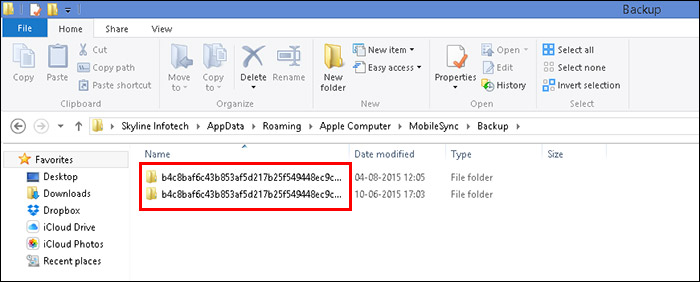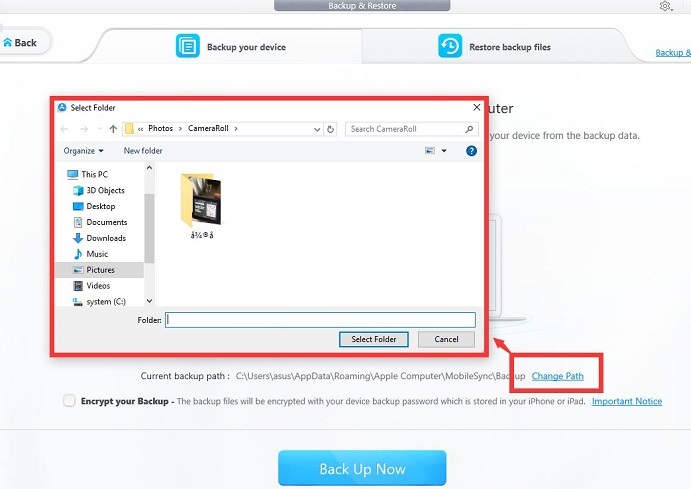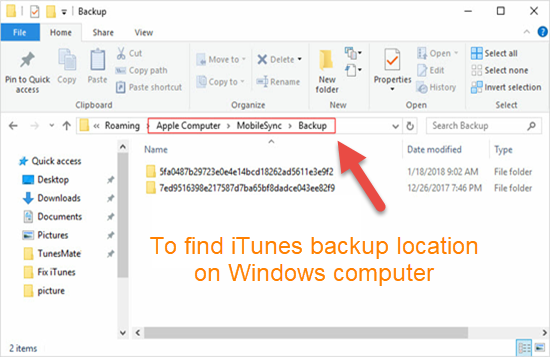

It’s recommended to pick one with the most free space.


However, if you follow the instructions in the guide carefully, everything should be ok. Once this secondary backup folder is created, each time a new backup is added in the original folder, the files will actually be saved in the new folder.īefore going to the actual steps you need to follow in order to change the iTunes backup location, you should know that this is a relatively advanced process. Therefore, the only solution to this remains creating a secondary backup folder, on another partition of your hard drive, for example, then link the original backup folder to it.

If you look into your system drive, you should see that the default destination of your iTunes backup folder is \Users\(your username)\AppData\Roaming\Apple Computer\MobileSync\Backup.īasically, iTunes is configured in such way that all backup files are copied in this location, so it’s impossible to pick another location. But Apple’s software doesn’t actually allow this, so…what should users do? Is there any method of changing the iTunes backup location? In this cases, you need to change the iTunes backup location, moving the folder to a partition where you have more space. Therefore, if you’re that type of user who backs up things pretty often, you will end up with a very low amount of storage space left on your system partition. However, there’s one big problem with this: the backup folder is kept on your PC, directly on the system drive. One of the most useful iTunes features is the ability to backup the data from an iPhone or iPad, in case you want to fix a specific issue or just keep your files saved.


 0 kommentar(er)
0 kommentar(er)
